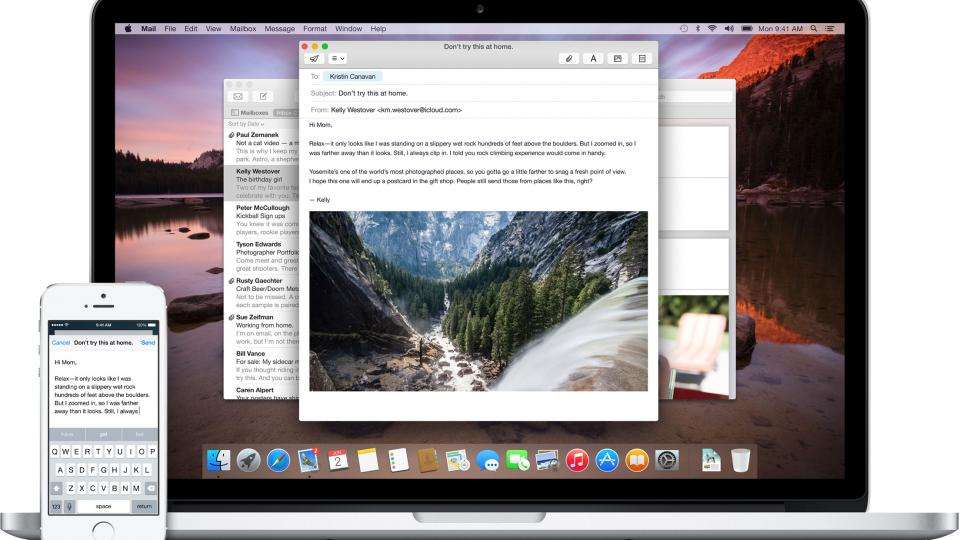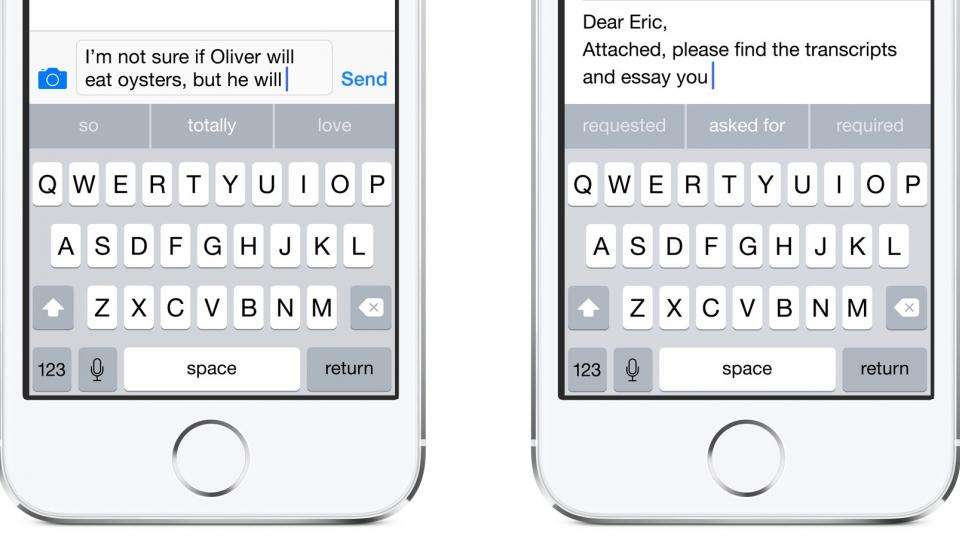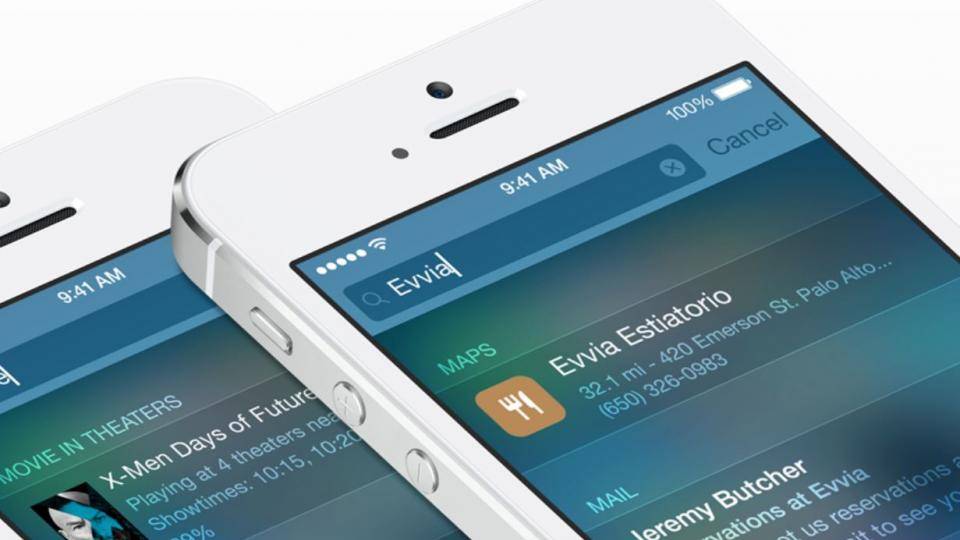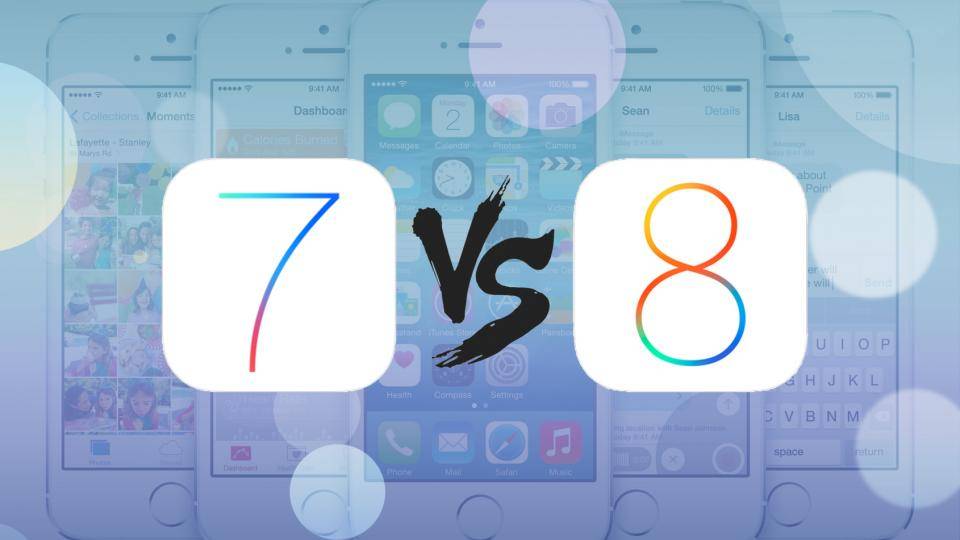Apple has released iOS 8 to the public almost four months after it first debuted at the Worldwide Developer Conference (WWDC). Whether you're upgrading your iPhone 5s or buying a iPhone 6 or iPhone 6 Plus you'll want to know exactly what has changed from iOS 7 and what new features are available.
Before you upgrade, using our guide on how to prepare your iPhone, iPod or iPad for iOS 8 to avoid any pitfalls, here's everything you need to know about the new features in iOS 8 – including whether or not to install it at all if you're still using an older iPhone or iPad .
A slightly newer look
When iOS 7 arrived, it introduced a radical new visual style to iOS. Apple has enhanced the design for iOS 8, adding extra details in some places but simplifying and removing redundant tabs in others. The biggest change is in the multitasking window, which places shortcuts to your most frequently contacted people above the currently running apps for easier access.
Notifications appear as a pop-up towards the top of the screen, rather than as a floating window that covers the center, and third party "widgets" are finally supported within the notification centre, although Apple still has final say on what makes it to the App store.
Apple Pay
With iOS 7 came Passbook, as a way to store vouchers, tickets and loyalty cards. With iOS 8 on the iPhone 6 Passbook can now be used with Apple Pay. This system stores credit cards securely in a digital wallet, letting you pay for goods using NFC and contactless payments. Authentication is via TouchID and your fingerprint, making the system secure and convenient. At the moment, this feature is only supported in the US, although we expect it to come to the UK before too long.
Continuity with OS X
iOS 8 will be fully integrated with OS X 10.10 Yosemite, with the ability to Airdrop files between mobile and desktop. Text messages can be displayed and responded to on a Mac laptop or desktop, and it's also possible to make and receive phone calls using a paired handset from the OS X desktop.

Hand off mode lets you switch devices when working on a document then pick up where you left off, based on proximity awareness. If you start writing an email on your phone, then move within range of your Mac, a prompt will appear in the dock asking whether you'd like to finish typing using the Mac keyboard.
Healthkit and homekit
Healthkit is a brand new addition to iOS, which will become a hub for all fitness and health-related apps to feed data into and share with other third party apps. Beyond heart rate, calories burnt and sleep patterns, it should also be able to track blood sugar and cholesterol using dedicated equipment.
You'll also be able to create an "emergency card" which contains allergies, blood type and other medical information, which can be accessed from the lock screen without actually unlocking the handset.
A smarter keyboard
iOS users have been stuck with the same basic keyboard since iOS first launched with the original iPhone, so the upgraded keyboard in iOS 8 is long overdue. The addition of QuickType predictions are supposed to suggest different words based on whether you're messaging a friend or writing a work email. Should you be asked a question, it will try to provide relevant answers.

If that doesn't sound convenient enough, you'll finally be able to install a third party keyboard to replace the stock Apple one. That means popular Android keyboards like Swype and Swiftkey will soon be getting iOS alternatives, letting you type by dragging a finger over the keyboard instead or tapping.
Interactive notifications
Notifications were previously static, forcing you into the relevant app rather than let you interact directly from the notification screen like you can with an Android device. That's no longer the case with iOS 8, meaning you don't have to leave one app when you get a text message; you can simply tap out your reply and return to what you're doing. This can be done from within the notification centre, or from the lock screen.
Wi-Fi calling
With iOS 7 you could send iMessages anywhere that you had an internet connection, including via a Wi-Fi network. That was as far as the techology went and you still required mobile reception to make and receive standard phone calls. With iOS 8, you now only require a Wi-Fi connection thanks to the new Wi-Fi calling service. As soon as you connect to wireless network, your phone will seamlessly transition from mobile mode to Wi-Fi mode, letting you make phone calls in the normal way. More importantly, people can call you using your regular phone number. This is great news for those situations where you've got poor reception or even if you're stuck on the Tube, as you can use the underground's wireless network. You need network support for this feature to work, with EE in the UK the first mobile network to provide the service.
Spotlight on search
Spotlight, the system-wide search accessed by pulling down from half way down the screen, has been updated to provide context-sensitive results based on what apps you have open and where you're physically standing. It can now also report back with results from multiple sources.

If you type the name of a restaurant, iOS 8 will display contact details and provide a link to map directions. Type in the name of a film and you'll get results from iTunes, as well as showtimes from your local cinemas.
Hands-free Siri
On iOS 7, you had to double-tap the home button to actiate Siri, Apple's smart voice assistant. With iOS 8, Siri will be always on, so you'll simply have to say "Hey Siri" followed by your command or question. Siri will also be able to buy things from the iTunes store for you, dictate in an additional 22 languages and will be fully integrated with Shazan, letting you ask what a song was to find out the artist and track details.
And the rest
Mail messages can now be marked as read, unread or flagged with a simple swipe, which should speed up organising your inbox. Threads can also be marked as VIP to track updates to important conversations, with red highlights to make them easier to identify.
The Photos app now saves every photo into the iCloud, meaning you'll be able to view them instantly on any iOS device using your iCloud account. You get 5GB of storage by default, and you can crop, straighten and add filters to your images. Edits are nondestructive, though, so you can always change your mind and restore the original image.
You can now send video and audio clips directly to other iOS users with the updated Messages app, as well as start group conversations and share your location with others.
Finally, the Safari web browser has been overhauled to bring it closer to Google's Chrome. As well as a cleaner, less cluttered interface, you'll be able to request desktop websites rather than the mobile alternatives, open private and normal tabs simultaneously, get an overview of all open web pages (which groups tabs from the same site together) and use the camera to scan credit card details when making a purchase online.
Conclusion - should you upgrade to iOS 8?
Upgrading to iOS 8 gets an emphatic yes from us – as long as you're using an iPhone 5s or 5c. We've tried out the various beta versions and can say that it's a big step forward, but for the smaller iPhone 4S the demanding update should be avoided. It significantly slows the handset down and the new design isn't suited to the smaller screen – meaning lots of scrolling in virtually all parts of the operating system.
For everyone else though, iOS 8 is thoroughly recommended. If iOS 7 was largely about making the OS more modern and slicker, iOS 8 carries on with that theme and throws in a bunch of important new features. With tighter integration between Apple products and new cloud features, iOS 8 is a big step forwards for Apple and the operating system that most people should be running.

